Ever since the Cold War ended, America’s international worries have focused on problems in the Mideast. But now, North Korea’s recent missile launches and defiance of UN resolutions is shifting our focus back to Asia and a piece of unresolved business: the Korean War.
On November 10, 1951, the Post published “Why We Went to War in Korea,” explaining President Truman’s decision to send troops to that conflict. The Truman administration, desperate to stop communists from seizing more countries than they’d already grabbed at the end of World War II, had pledged help to any country resisting a communist takeover. So from 1950 to 1953, America fought to prevent communist North Korea from overrunning the democratic South Korea.
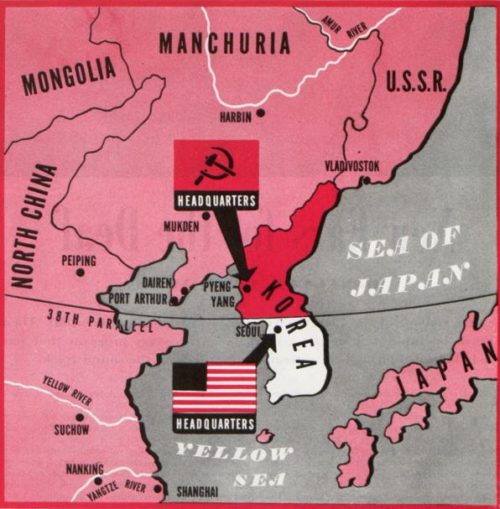
The United Nations also recognized Korea as a test of its peacekeeping mission. If the international community allowed the communists to seize South Korea, the UN would become as useless as the long defunct League of Nations.
More than 30,000 Americans lost their lives in that conflict before a cease-fire went into effect. But the Korean War never really ended — not for Korea, nor for us. North Korea still threatens South Korea as well as other Asian neighbors. It has long trumpeted its nuclear weapons program. It has launched missiles with increasingly longer ranges and conducted underground tests of its nuclear weapons, contrary to international law and its own promise to cease these activities.
North Korea is particularly hostile to the U.S. and claims it now has the capabilities to launch a nuclear attack on America.
Many Americans have been hoping that North Korea would simply go away — implode, as the Soviet Union did. Despite the odds, the communist North Korean regime remains, now led by the third generation of the same family.
While the battles of World War II are honored and the complexities of the Vietnam War are frequently rehashed, comparatively little coverage is given to American’s forgotten war — the Korean War. The timeline below gives an overview of the Korean War and its continuing consequences.
Perhaps we celebrated the end of the Cold War a little too soon.
Timeline for Korean Conflict
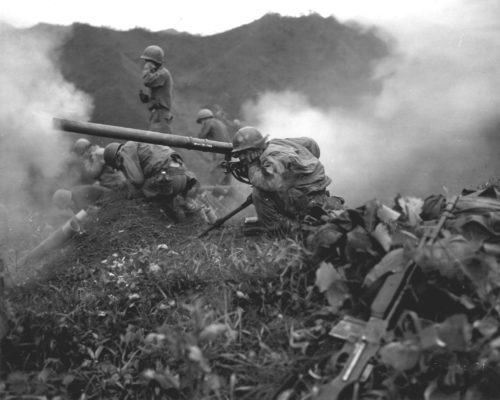
The Hot War
1945: World War II ends. American troops are stationed in the southern half of Korea, and Russian troops in the north. The dividing line between two zones is the 38th parallel.
1946: Russia sets up a puppet communist government in North Korea, headed by Kim Il-sung.
1947: American forces start withdrawing from South Korea, leaving the government in the hands of pro-American President Syngman Rhee.
1948: Soviet forces begin withdrawing from North Korea. North and South Korea’s governments both claim sovereignty over the entire country.
1950:
- With Soviet backing, North Korea crosses the 38th parallel to invade the south. It quickly pushes back South Korean forces, eventually capturing the South Korean capital of Seoul.
- South Korean President Syngman Rhee responds to the invasion by rounding up any political opponents in South Korea. His forces executed more than 100,000 South Koreans during the “Summer of Terror.”
- President Truman orders American troops to South Korea. The United Nations also sends forces to defend South Korean autonomy.
- After a long retreat, Americans and South Koreans finally halt the North Korean advance.
- In August, General MacArthur achieves a decisive victory by landing troops at Inchon, close to the 38th parallel. U.S. troops cut North Korea troops’ supply lines, forcing them into a rapid retreat northward. Americans soon retake South Korea. President Truman authorizes MacArthur to cross the 38th parallel and pursue the fleeing North Koreans unless he meets opposition by Chinese or Russian troops. American troops enter the North Korean capital, Pyongyang.
- Chinese troops cross their border into North Korea and attack South Korean troops. The Chinese push the Americans and South Koreans back toward the 38th parallel.
1951: The armies reach a stalemate north of the 38th parallel. The United Nations calls for negotiations by the four participants — North and South Korea, China, and America — to end the conflict. Meanwhile the shooting continues with heavy losses on both sides.
The Cold War
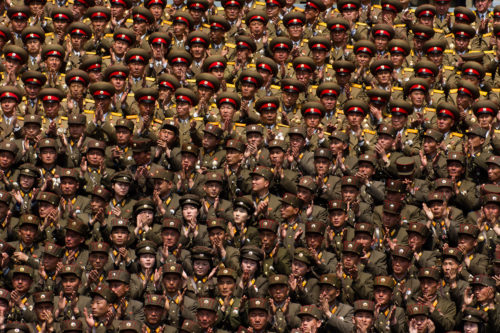
1952: Dwight Eisenhower wins the presidency by promising to secure an honorable truce in Korea.
1953: Representatives of all four nations agree to an armistice that recognizes North and South Korea. Representatives meet at Panmunjom, on the border between North and South Korea, for talks to reach a final, permanent peace treaty, but negotiations quickly break down.
1954: A meeting between the U.S. and China to resolve the Korean conflict also fails to reach a resolution. Talks at Panmunjom continue to this day.
1968: North Korea captures a U.S. naval intelligence ship it claims was in its territorial waters. Negotiations eventually lead to the crew’s release.
1985: North Korea joins the Nuclear Non-Proliferation Treaty, which prevents it from developing nuclear weapons.
1986: North Korea starts up a nuclear reactor capable of making weapons-grade material.
1993: The International Atomic Energy Agency demands that North Korea allow inspectors into the country to examine storage sites of nuclear waste.
1994: North Korea agrees to halt its nuclear program in return for oil and nuclear technology. Kim Il-sung dies and is succeeded by Kim Jong-il.
1996: An estimated three million North Koreans starve to death, the result of floods, drought, and government mismanagement. North Korea masses thousands of troops in the demilitarized zone near the 38th parallel.
1998: North Korea launches a rocket that travels beyond Japan, farther than a North Korean missile has ever reached.
2000: Kim Jong-il and South Korean President Kim Dae-jung agree at a summit to renew negotiations.
2002: President George W. Bush calls North Korea a part of the “axis of evil,” which includes Iran and Iraq, all of which, Bush claims, are building weapons of mass destruction. South Korea, Japan, and the U.S. stop all oil exports to North Korea after learning that the North had resumed its nuclear weapons program.
2003: After years of threatening to leave the Nuclear Non-Proliferation Treaty, North Korea finally ends its agreement to cease production of nuclear weapons.
2005: North Korea publicly declares it has developed its own nuclear arsenal.
2006: North Korea fires a new missile said to be capable of reaching the U.S. It fails shortly after takeoff. North Korea begins illegal underground testing of nuclear weapons. The United Nations responds with economic and commercial sanctions.
2007: North Korea closes down its main nuclear reactor in return for foreign aid. South Korea sends $50 million for flood relief.
2009: North Korea terminates all military and political agreements with South Korea. It resumes its nuclear weapons program, conducting underground tests and launching another long-range rocket.
2010: An American scientist is shown a secret uranium-enriching facility in North Korea.
2011: Kim Jong-il dies and is succeeded by Kim Jong-un.
2012: Another long-range rocket test fails, but the government announces it now has missiles that will reach America.
2013: A third underground nuclear test by North Korea brings new UN sanctions. China, North Korea’s only ally, stops the export of any items that will help North Korea build nuclear, chemical, or biological weapons.
2014: North Korea launches two medium-range missiles. They agree to resume talks with South Korea. North Korea and the U.S. accuse each other of cyber attacks.
2015: After conducting its fifth underground nuclear test, North Korea is hit with United Nations sanctions that will cost the country $800 million.
2016: North Korea claims it has completed tests of its first hydrogen bomb, which is doubted by experts.
2017: North Korea announces it is in the final stages of developing long-range missiles with nuclear capability. Kim Jong-un’s half-brother Kim Jong-nam is assassinated in Malaysia; investigators suspect North Korean involvement.
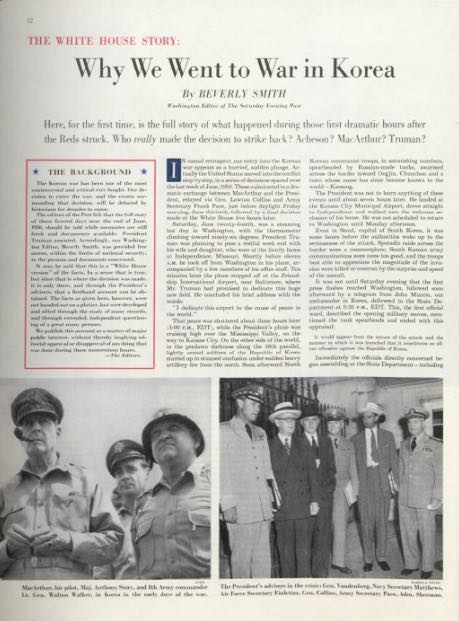
Featured image: Shutterstock
Become a Saturday Evening Post member and enjoy unlimited access. Subscribe now
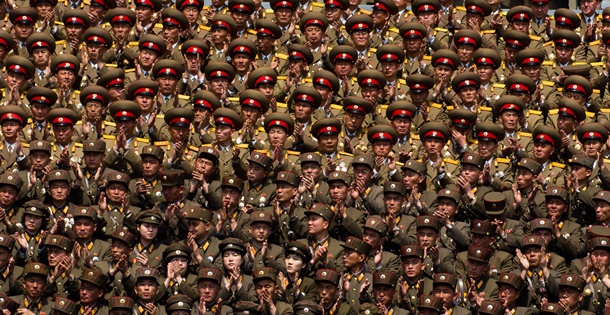



Comments
I read this paper and enjoy from this. Thank you from north of Iran.
Arash kharrat